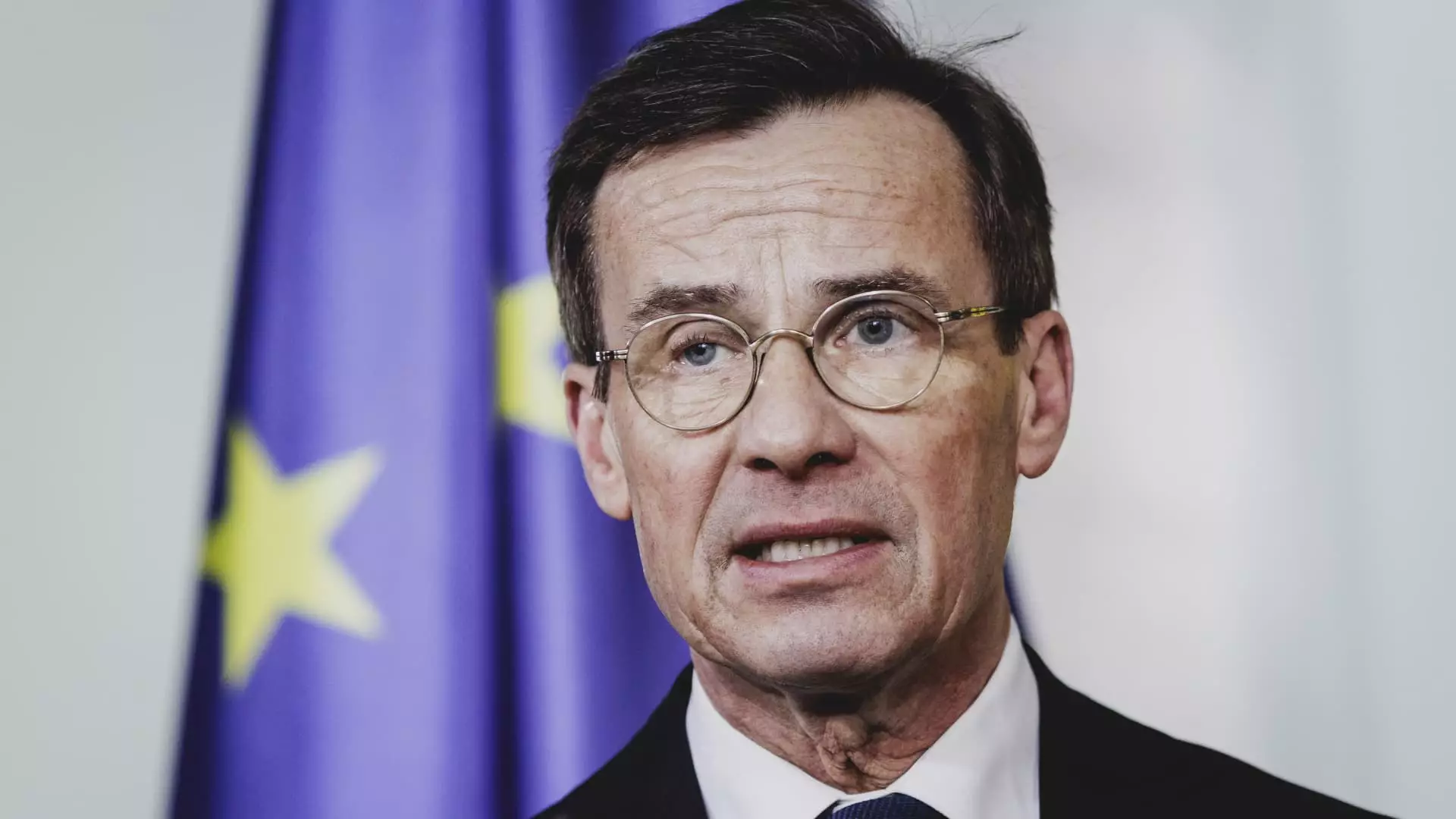As the global race for artificial intelligence (AI) relentlessly intensifies, European leaders are beginning to express grave concerns about the region’s ability to compete on the world stage. At a recent tech event in Stockholm, Sweden’s Prime Minister Ulf Kristersson characterized the continent’s potential trajectory as perilously close to that of a mere “museum” if it fails to adapt its regulatory stance. This statement encapsulates a broader sentiment among leaders across Europe, emphasizing the necessity for regulatory reform to invigorate the tech sector and spur economic growth.
The Prime Minister’s remarks highlight a critical juncture for Europe—a region that appears to be lagging behind the United States and China in terms of economic growth and technological advancement over the past two decades. The data surrounding the rapid development of AI technologies in these territories presents a stark contrast to Europe’s more cautious regulatory environment. Kristersson’s call for change reflects growing anxiety among European policymakers and industry stakeholders, as they witness the potential of AI technologies being harnessed overseas at a pace that Europe struggles to match.
French President Emmanuel Macron’s announcement of a substantial €109 billion investment in AI also underscores this urgency. This initiative not only draws from domestic entities but also secures commitments from international investors, signifying a collaborative approach aimed at rejuvenating Europe’s technological landscape. In light of such investments, the European Union is poised to mobilize an additional €200 billion for AI initiatives, which, while promising, raises questions about how effectively these funds will be utilized amid stringent regulations.
While investments signal an optimistic outlook, they are hindered by the regulatory framework established within the European Union. The recently enacted AI Act, which introduces comprehensive safeguards against AI-related risks, has drawn criticism for being overly stringent. Some argue that Europe’s regulatory zeal compromises innovation, creating a bottleneck that stifles the growth potential of the very technologies it seeks to manage.
U.S. Vice President JD Vance has also weighed in, asserting that Europe’s preoccupation with regulation hampers its technological aspirations. His call for a shift in mindset—one that fosters optimism rather than fear—echoes sentiments shared by various tech leaders who contend that lighter regulations could unleash a wave of creativity and advancement in the region. This juxtaposition of regulatory caution and the need for innovation conjures an essential question: how can Europe strike a balance that ensures safety while also promoting technological growth?
The ramifications of a rigid regulatory landscape are palpable for European tech companies. Many have found it increasingly challenging to leverage the latest AI technologies due to ambiguities within EU legislation. Startups, in particular, are navigating a minefield of regulatory hurdles that can hinder their growth and prospects. Alarmingly, some companies are choosing to relocate to regions with more favorable regulations, particularly the U.S., where access to capital and a more conducive business environment can catalyze innovation.
Kristersson’s assertion emphasizes the pressing need for Europe to evolve into a hub where business and innovation can flourish. The stakes are high; if regulatory conditions do not improve, Europe risks losing its competitive edge, compelling a generation of innovative companies to seek refuge elsewhere.
In a rapidly changing global economy, the challenge faced by Europe is not insurmountable but it does necessitate urgent action. To remain competitive on the world stage, European leaders must follow through on their rhetoric about enhancing the region’s position as a technological powerhouse. This commitment to fostering an environment that champions growth and innovation must include a willingness to reassess regulatory frameworks, ensuring they facilitate rather than hinder technological advancements.
Kristersson’s warnings serve as a clarion call for change, urging European nations to embrace the AI revolution with open arms, while also delineating a path that reconciles innovation with necessary safeguards. Only then can Europe hope to shed the “museum” label and step forward as a thriving player in the global AI landscape, keeping pace with counterparts in the United States and China. The future of Europe’s technological and economic landscape hinges on this critical moment; it is time for leaders to act decisively in favor of growth and innovation.


Leave a Reply